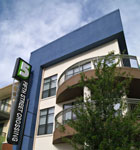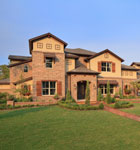1. Create a budget
Like all construction projects, the work on sophisticated plumbing and fire-protection piping systems begins with looking at the plans and putting together a proposed budget. “We see drawings in the 40–60 percent complete range, so they aren’t developed yet for construction,” Clancy says. “Through our years of experience, we are able to accurately budget plumbing systems as if they were completely drawn.”
2. Bid on the project
After the budget, once the company has a complete set of drawings, it will then put together a finished estimate to place a bid. When the firm gets new work, the estimator usually becomes the project manager. As Clancy puts it, “who knows the job better than the one who estimated it?”
American Plumbing & Heating has won bids from companies such as Genzyme, Novartis, and Vertex, constructing piping systems needed for research and drug development. The company has also been involved in a number of other high-profile projects, including, currently, a new installation at the University of Massachusetts Medical School in Worcester. Additionally, the company has done renovations and new installations at Brigham and Women’s Hospital, Massachusetts General Hospital, Fenway Park, Gillette Stadium, Harvard University, Boston University, and MIT. Its list of clients is a testament to the high quality of work that its teams consistently produce.
3. Create real-time 3-D models
American Plumbing & Heating has also been a forerunner in the use of Building Information Modeling (BIM), a technology that has had a growing impact in construction. “This is taking coordination to another level,” Bent says. “Along with BIM, we use a program called Navisworks, a clash-detection system, which allows us to literally fly through a project in a 3-D model. This enables us to see any conflicts before construction starts and fix them in the model.”
 4. Complete the fabrication
4. Complete the fabrication
The firm completes sections of piping in its sophisticated 30,000-square-foot prefabrication facility, located at its headquarters. “We can take the drawings from computer-designed graphics to construction in literally the same day, if necessary,” Clancy says. “We are working in a controlled atmosphere rather than out on a construction site. Winter weather doesn’t slow us down. We’ll send the job out in prefabricated sections and assemble them in the field. We do this throughout the construction process.”
5. Schedule the work
Scheduling is a key component, and some projects, including the work at the University of Massachusetts Medical School (pictured below), have a fast-track schedule that has to be looked at carefully and addressed during preplanning in order to meet the project’s goals. Other projects must be completed while a building is occupied, so American Plumbing & Heating must find time to run piping and make tie-ins to existing piping in occupied areas. In such situations, the firm must also deal with noise constraints; drilling has to be done during off hours while quieter work, such as installing piping, is done during the day.
6. Install the piping and finishes
American Plumbing & Heating relies on a remarkably experienced team of veteran foreman and craftspeople to complete plumbing in two basic stages: rough plumbing and finish plumbing. Rough plumbing involves the installation of piping—which will convey water, drainage, and gases to fixtures and equipment—in walls and above ceilings. Everything previously made in the prefabrication facility is brought and positioned on-site in stages, and it’s then tested and inspected by a local inspector. Afterward, the general contractor will close in the walls, complete finishes, and begin to install casework, and it is then that American Plumbing & Heating does finish plumbing, installing all the fixtures and finishes on the job.
“We have been very fortunate,” Clancy says, “to be able to surround ourselves with some of the most skilled plumbers and pipe-fitters in the business. They understand the nuts and bolts of the most complex piping systems. They understand that the work of the 21st-century plumber involves a lot more than what most people might imagine. I am proud of what our company has accomplished—and what we will accomplish in the future.”
The ever-growing list of American Plumbing & Heating clients certainly confirms what Clancy says. In the coming years, New England’s biotech and pharmaceutical industries are expected to grow enormously, and the Boston area will always remain a center for colleges, universities, and outstanding sports facilities. American Plumbing & Heating is destined to be an important part of that future. ABQ




